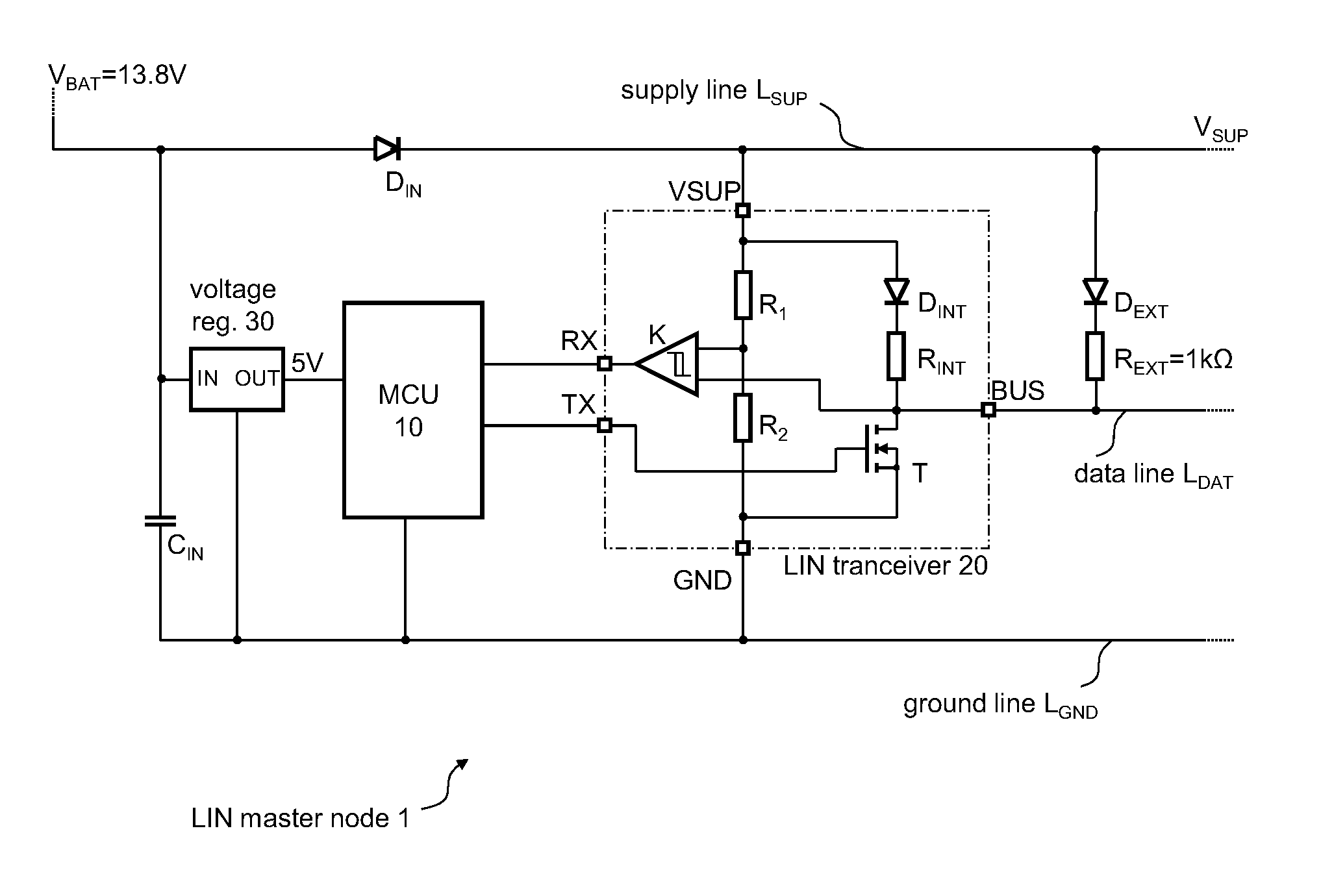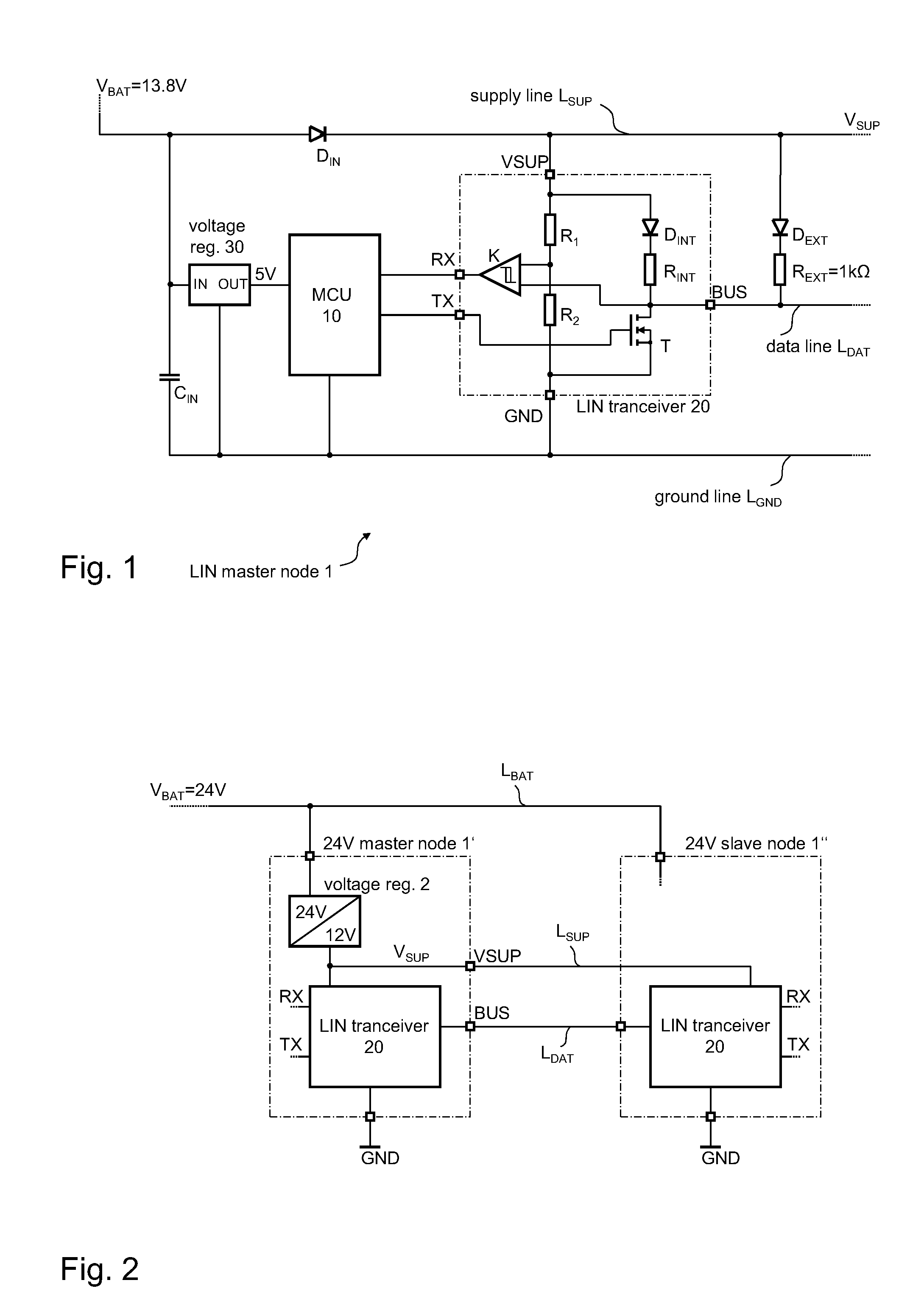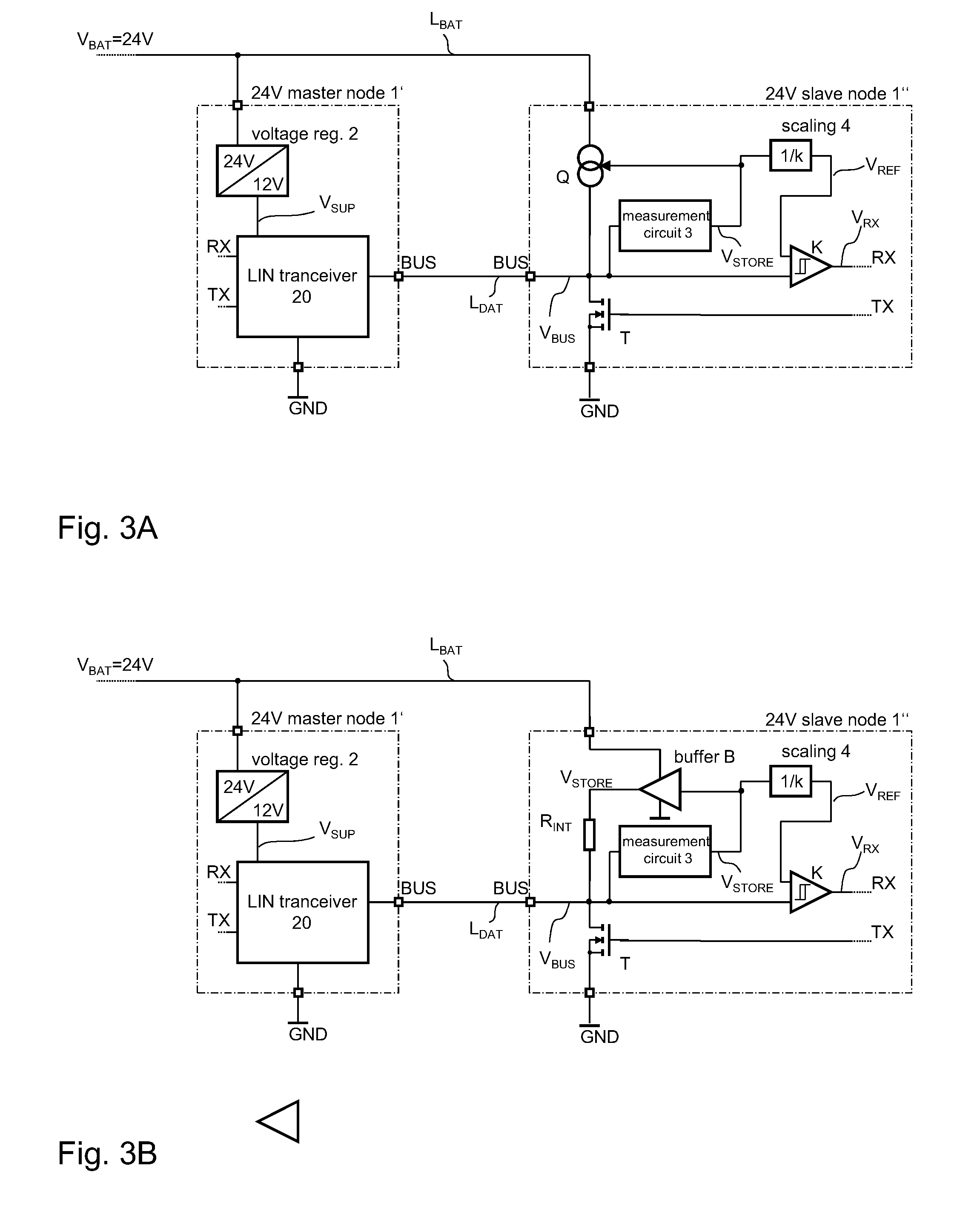LIN Bus Module
a technology of lin bus and bus module, which is applied in the direction of instruments, electric digital data processing, climate sustainability, etc., can solve the problems of inability to meet the requirements of lin standard-compliant nodes in trucks (lorries) and buses, too expensive controller area network (can) bus implementation in every electronic module or device in an automobile, and inability to meet the requirements of lin standards
- Summary
- Abstract
- Description
- Claims
- Application Information
AI Technical Summary
Benefits of technology
Problems solved by technology
Method used
Image
Examples
Embodiment Construction
[0017]FIG. 1 illustrates an exemplary circuit of a LIN node. The LIN node 1 includes a microcontroller 10 (MCU or microcontroller unit) to allow the software implementation of the comparably complex functionality necessary for a master LIN node. A slave LIN node may operate without a dedicated microcontroller and may include some sensor circuitry instead. Regardless of the actual purpose of a LIN node, a LIN node will always include a LIN transceiver 20 which may be a separate integrated circuit or included in the MCU 10. Depending on the application, the LIN transceiver may also be formed on a printed circuit board using discrete circuit components.
[0018]In the present example, the LIN transceiver 20 has a supply terminal VSUP, a ground terminal GND (wherein ground generally relates to a reference potential), a receive terminal RX, a transmit terminal TX, and a LIN bus terminal labeled BUS. According to the LIN specification, the supply voltage VSUP which is to be applied to the su...
PUM
 Login to View More
Login to View More Abstract
Description
Claims
Application Information
 Login to View More
Login to View More - R&D
- Intellectual Property
- Life Sciences
- Materials
- Tech Scout
- Unparalleled Data Quality
- Higher Quality Content
- 60% Fewer Hallucinations
Browse by: Latest US Patents, China's latest patents, Technical Efficacy Thesaurus, Application Domain, Technology Topic, Popular Technical Reports.
© 2025 PatSnap. All rights reserved.Legal|Privacy policy|Modern Slavery Act Transparency Statement|Sitemap|About US| Contact US: help@patsnap.com



